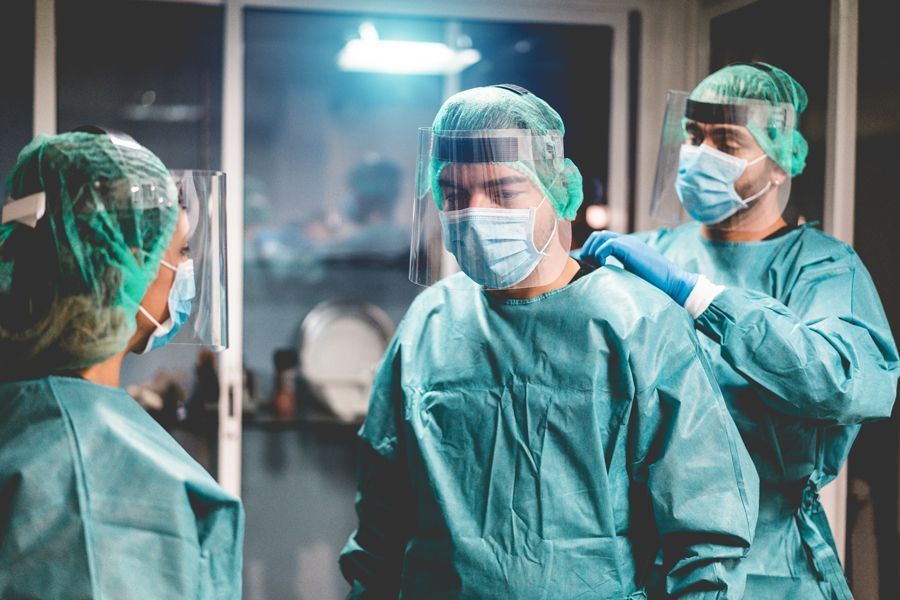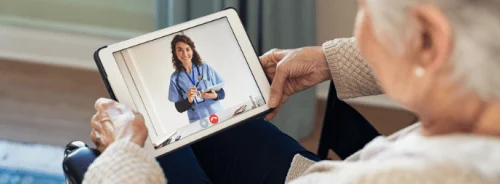HealthManagement, Volume 21 - Issue 3, 2021
Key Points
- Response of healthcare workers in hospitals to a crisis is built on healthy engagement and relationships during times of peace.
- Agility, innovation and responsiveness during the crisis are as important to staff as psychological preparedness prior to the event.
- A three-pillar approach is proposed for staff wellbeing in hospitals - Care, Protection and Wellness, with representation from a wide range of staff groups needed to make wellbeing work.
Facing the Tempest
In retrospect although the outbreak was unprecedented for our generation, the response was not. It would not have been possible to react and then continually adjust our sails to care for patients and our staff at the same time, if not for lessons learnt from past events, commitment from leaders that we stay the course, and the relationships built along the way that allowed colleagues to place all hands on deck and work together, where we were needed the most.
Shortly after recording the first case of COVID-19 in Singapore on 23 January 2020, the country raised its ‘Disease Outbreak Response System Condition’ (DORSCON) level to Orange on 7 February, the second highest alert level for a disease outbreak, and has remained there since. One can only fight what one sees, and one only sees what one knows. Whilst preparedness for an unknown pathogen had been planned for, the initial reaction of staff was marked by the narrative of SARS from 2003, where the outbreak claimed lives of patients and healthcare workers alike, but was contained swiftly with normalcy returning in a year after the outbreak. COVID-19, on the other hand, has spread far and wide, and assumed mutated forms, kindling greater worry, and one year on we still do not have any ideas when normalcy will return, in a new form or otherwise.
Along the way, the hospital has been a ship sailing into rough seas in the dark with a light to show the immediate way; unable to predict the next wave and what it may bring, but having to trust that the crew work as one, that their training would serve all well, and that the course set for us will lead us to safe harbour once again.
At the beginning of the journey it became apparent that prediction and preparation would be difficult due to the evolving nature of the situation, and that communication would be key – between management and staff, between staff, and from staff to their own families and patients. Agility and resilience became keywords in healthcare in response to this new pandemic, keeping one eye on the present while attempting to peer into the future.
We were fortunate to have existing structures in place: a well-developed wellness presence, an established peer support programme led by an experienced coordinator, and committed clinicians from Psychology, Care and Counselling and Psychiatry, supported by a rapid structure created by hospital management to align the work of responding to the needs of staff in the form of a Staff Wellbeing Group on 2 February 2020. In the words of our CEO, “realising that it was always the small acts of kindness that matter the most”, it was apparent that said small acts, meant to enable our staff to continue to work in such uncertain times, had to include consideration for basic needs. This included the ability to travel to and from work, access to meals and supply of personal protective equipment, and a place to stay, for staff affected by Malaysia’s border closures, or those who had been asked to seek accommodation elsewhere by worried landlords. The initial response of an understandably anxious population was experienced as stigma against healthcare workers, but very soon replaced by a groundswell of goodwill, in stark contrast to the experience of SARS. From 14 February 2020 onwards, there was a steady stream, at times a flood, of gestures from the public wanting to contribute to the welfare of healthcare workers. However, it was already apparent from the end of January that to the staff of TTSH, being closely tied to the National Centre for Infectious Diseases, the gestures of goodwill needed to start internally, from management to staff, and from staff to staff.

One social innovation enabled this to happen – the ‘Spread A Smile’ movement led by the psychologists and medical social workers, and supported by a spread of many other hospital departments, from Corporate Communications to the Office of Clinical Governance. Via its tagline – ‘Be the smile behind the mask’ – it encouraged staff to use social media to showcase appreciation for one another, and to acknowledge acts of kindness that otherwise would be easy to forget in the cycle of showing up to work and getting home exhausted to rest in the thick of the outbreak. Staff were deployed to unfamiliar environments and had to work for longer hours than ever before, and being seen for their hard work and empathy helped them to push a little further each day. The #HealthcareHeroes movement provided badges for all staff, to display the pride felt by each staff in the course of their work, and also made its way into the community in support of all healthcare workers across different institutions.
There were many pain points along the way, from healthcare workers choosing to live separately from their families in the initial stages, segregation at work, staff who were prevented from travel (before borders were closed) and had not met their own families since the pandemic, to facing burnout from the sheer workload of managing wave after wave of COVID-19 and non-COVID-19 patients alike – there are countless human stories created in the space of the year, filled with myriads of emotions including grief and hope. The Goodwill team, managed by Human Resources (HR), rose to the challenge of managing the supply of constant wishes of hope for our staff. The team also ensured that we were able to pay it forward to the community we serve, most notably the large groups of foreign workers who soon represented the largest population of those afflicted by COVID-19.
While promoting resilience and positive psychology, it was also important for us to keep an eye on the pulse of our staff, and to be able to respond to needs as they arose. A digital solution presented itself in the form of a workplace wellbeing survey extended to all staff from February 2020, and results were collated fortnightly, with trends and pain-points escalated to senior management, who were ready to respond to feedback personally. The survey enabled us to track self-reported stress levels as well as self-reported resilience levels, and it is noteworthy that resilience remained ahead of stress levels throughout, suggesting that our staff were in a position to respond positively to the challenges they faced without becoming overwhelmed. Also, difficulties reported in a certain week did not remain as hardships in subsequent weeks suggesting that problems were being solved organically, and this further strengthened our belief in collective leadership enabling change to happen at ground level. A hotline was available at all times for staff needing a listening ear, and psychological debriefs were held for groups and individuals who had faced unexpected events, for even in times of crisis, the challenges of daily life still continue.
Emerging from the Eye of the Storm
The transition from COVID-19-focused healthcare to ‘business as usual’ has not been so much due to the receding of COVID-19 but rather the initial creep, followed by rapid resurgence of patient numbers arriving back at acute hospital for care. This has been accompanied by staff returning to their usual areas of work, with a sense of increasing their own work capacity, and also mindful of the potential effects of not being able to seek their own wellbeing from traditional sources.
The scaffolding for staff wellbeing in this emerging period is broadly divided into areas of Care, Protection and Wellness. This is within the broader categories of wellbeing sharing the remit of staff safety and health with occupational health and environmental safety and process in the hospital, with larger connections to HR management (HRM), organisational development, people development and learning, supported by digitalisation initiatives and healthcare innovation.
Care
Care for the wellbeing of our staff comprises physical and emotional care, and being in a position to respond to their needs effectively and in time. An employee-assistance programme, which provides personalised and relevant interventions for staff, may be one way to deliver such a response. For example, access to a counselling hotline for emotional support needs to be present for staff in times of despair or confusion, to support them through initial phases of psychological distress via mental health first aid, and enable them to develop self-efficacy in problem-solving at the workplace. Peer support at the departmental level or a formal hotline for the hospital may fulfil this need. Ideally, there are tiers for escalation, from the staff’s peers or supervisors, to a working group responsible for care for staff, and to escalate upwards towards formal mental health interventions for appropriately triaged cases or enable staff to seek counselling in the community subsequently. The interventions provided need to be tracked to demonstrate safety and effectiveness, whilst balancing need for privacy of staff. Involvement of a separate non-affiliated programme to deliver counselling may be needed when staff wish for anonymity, and mechanics of engagement with such a separate programme will need to be formalised to enable staff to get the help they need, while also enabling the workplace to identify systematic gaps affecting staff on a macro level.
Whilst tracking responses to requests for assistance, it may be worthwhile to invest in a systematic method of collecting and collating data on the wellbeing of staff, at regular touch points separate from periods of crisis or organisational stress. This allows a denominator to be developed over time that reflects the particular challenges and strengths of the various subpopulations in the general staff group, such that the voices of auxiliary or transient staff are heard equitably. The collection of data may be driven by technology, and digital workplace innovations are ideal for such mass outreach and capture of cross-sectional screening information. The role of digitalisation of care efforts also extends to protection and wellness, and if information can be cross-referenced to other HRM-related measures such as staff turnover, absenteeism, presenteeism and adverse outcomes.
Care is also best delivered in proximity to where staff work, and embedding nominated staff to be care or welfare officers within each department serves to remind supervisors and managers that staff wellbeing cannot be overlooked. Such appointed officers carry the message of staff wellbeing with them, and we have witnessed our welfare officers ingeniously creating movements and events within their own departments that are relevant and accessible to their peers.
Education is another component of care that needs regular attention. With the internet, we have access to material developed for staff wellbeing across the world, and because our fundamental concerns and suffering are universal, there are many readily available toolkits, information leaflets and intervention aids which require minimal adjustment to make them locally relevant. Useful reminders on caring for oneself, engaging in regular physical activity, practising mindfulness and compassion at work, can be disseminated to provide just-in-time reminders for staff for self-care. Such educational materials may also include information on normal responses to abnormal situations, and to help staff identify and overcome negative thoughts or behaviours that they would like to see change, with links to mobile applications available for individuals keen on engaging more rigorously with addressing their mental health needs, with interventions such as cognitive behavioural therapy.
Protection
Whilst the message of care drives wellbeing from within the individual, it is also necessary for the organisation to provide protection from events which unfold and may affect staff individually, or as a group. Situations of abuse at the workplace present unexpectedly, as single events, or repeatedly through various contact points in the healthcare workplace. A system needs to be developed that enables, via policy, to indicate to staff that their wellbeing at work matters, and then to capture information from these contact points, related to individuals or work settings where abuse is more prevalently encountered, for a response to be developed. Such responses need to be guided by policies, which are enforced (policies without enforcement unfortunately lead to disillusionment amongst staff), and supported by educational material made available to staff on how to cope with situations where they may feel harassed, threatened, or abused. While working hard to prevent such occurrences, it is also necessary to mitigate against harm caused by unpredictable events, and staff need to know that they are supported by medical, legal and workplace-based occupational health interventions enabling them to return to work safely.
The mechanics of such protection are complex: there are traditional roles in healthcare such as frontline staff who man entry points into the hospital, nursing staff who provide the greatest number of contact hours with patients, and pharmacy staff who may need to report inappropriate medication use. Drills enabling staff to familiarise themselves with a plan of action must be run to inculcate muscle memory, in abusive situations often there is no time to run through cognitive steps needed for the situation. As such, the composition of the group seeking to enforce protection of staff needs to include representatives from these main groups as well as Legal, Corporate Communications, Hospitality and Environmental Services, Quality Service Management and senior management. The messaging of protection for staff balanced against portraying the hospital as being punitive needs to be carefully considered. Ongoing campaigns and awareness on a national level serve to reinforce the message that healthcare workers ought to be protected while carrying out their work.
Wellness
With care and protection as building blocks akin to the basic levels of a hierarchy of needs, wellness caps off the ‘growth needs’ while also anchoring the physical aspects of care. Wellness is a total way to invest in the health of our staff, with a wide-ranging ambit that includes health screening, activities for staff cohesion, employee engagement, physical events and domains such as nutrition, legal knowledge, financial literacy, etc.
With safe management measures implemented during COVID-19, we were not permitted to organise regular mass gathering and group-level activities. Daily fitness classes, evening badminton sessions, weekend hikes and even use of the staff gym were all suspended or cancelled. There was a pressing need to modify our regular wellness programme and find ways to help our staff stay active, healthy and feel engaged both physically and mentally.
As some of our staff also worked from home, a fresh approach was required to reach out to as many of them as possible, keep their morale up and help them stay connected with their colleagues back in the workplace. The virtual space hence became our key platform in engaging them. This digital approach allows us to reach out to staff and remote teams at multiple locations and working modes anytime and anywhere. Besides catering to staff at work, the initiative also serves to ease the stress and anxiety of those working from home during the pandemic.
The digital strategy called for gamifying regular wellness activities into creative, interactive and easy-to-participate challenges to attract and retain staff interest.
One of the virtual engagements rolled out was a six-week virtual fitness challenge titled Get Moving. Get Active. Get Rewarded. The activity was in partnership with a reputable sports shoe brand, where we called upon our staff to ‘Exercise Together… Separately’. Staff would only need to either walk or jog a minimum mileage stipulated in the uniquely curated weekly challenge, post it onto our in-house social media platform Workplace@Facebook, get rewarded with an attractive token and stand a chance to win a pair of running shoes.
In another holistic virtual wellness game Well-BeINGO, staff were incentivised to complete on their own or with their colleagues (in proper safe distancing measure) a series of health and wellbeing-related activities consisting of mindfulness colouring, nutrition, physical workouts, social engagement, financial webinar, dance challenge, etc. in a Bingo format.
The hospital is very grateful to have received outpouring of well-wishes and goodwill donations from members of the public and organisations during the pandemic. The goodies received were shared across the campus amongst healthcare professionals, frontline support and backend staff in appreciation of everyone’s efforts in battling COVID-19. Demonstrating such gestures of gratitude was important in keeping staff morale up and acknowledging that everyone plays a part regardless of our roles during the pandemic. The donations received were in such abundance that we were able to organise a ‘Kampung Mart’, where our lower-wage colleagues and outsourced staff were invited for a day of ‘pick-all-you-can’ free shopping.
We recognise that in these unprecedented times we need continuous efforts to help our staff remain Healthy, Fit and Resilient, provide them with opportunities for recreation and relaxation so that they can still maintain a balanced work-life during the pandemic. Only then can they perform the various roles in their personal lives effectively and in turn better care for our patients.
Conclusion
There have been many lessons learnt along the way, and it is true indeed that in crisis there is opportunity. For the organisation there is the opportunity to learn to trust in their staff, to reap the rewards of relationships built along the way and to believe that a responsive system is possible if one embraces adaptation and agility. For the individual, there is the opportunity to appraise what is truly necessary, and what aspects of our past behaviours and thoughts we may be able to let go on to benefit from new ways of doing, thinking and being.
Conflict of Interest
None. 








